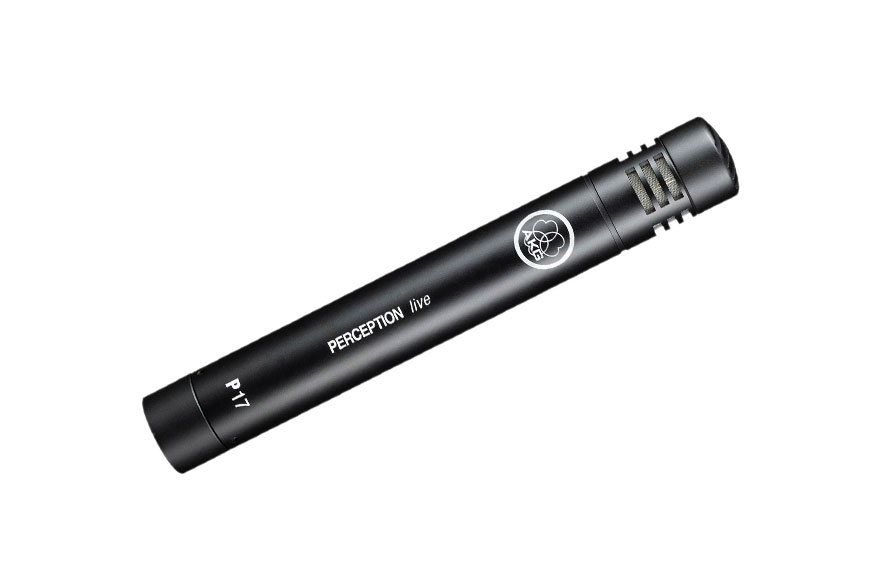The best recording microphone is a tough tag to give a definitive answer on. So many top industry microphones are making an impact on how music is recorded and produced. As more interest has shifted to mobile recording and capturing performances outside of traditional studio environments, the microphone design and manufacturing industry has accommodated this interest with several unique models.
In this countdown of the top 10 best recording microphones, we hope to highlight some more affordable microphones, some trendier microphones, and some of the best-sounding consumer microphones currently in the market.
From condenser microphones for vocals to USB microphones, mics for recording, and more, here is our list!
TONOR TN12326 Condenser Microphone
The first item on our list of the best recording microphones is a simple condenser microphone that can be purchased for under $20.
Small, light, and underrated, the TONOR TN12326 condenser microphone performs just as well as some of the more high-end microphones and is portable.
This omnidirectional microphone is great for podcast recording and speech. For musicians who do a lot of traveling, using the TONOR condenser microphone promises some pretty solid performance capture. Complete with a 3.5mm audio jack, store and save audio with ease. If you’re looking for a cheap vocal microphone, you’re not going to find anything better than this.
Shure SLX2/SM58 Wireless Microphone
Shure is a go-to brand name for quality professional microphones and has been for decades.
The Shure SLX2/SM58 is a wireless microphone and one of the best currently offered on the market.
In effect, this is the wireless version of the popularized SM58 dynamic microphone. The unit comes complete with the patented Audio Reference Compounding Technology which is unique to Shure. It’s known for its clear transmission and dynamic range. The SLX2/SM58 is a wireless microphone that has been tested in live performance, music production, speech recording, and a wide array of different environments. This is a favourite.
If you have never used a wireless microphone before and can shell out the upfront cost, in terms of cost v. performance, the Shure SLX2/SM58 is a solid buy.
Sennheiser EW 135 G3 Wireless Microphone
Just like Shure, Sennheiser is another high-quality microphone brand name that has been around for decades.
The Sennheiser EW 135 G3 is among their higher-end wireless microphones and demonstrates interference-free reception and premium sound all the way. Currently available in a set with additional features and accessories, receive the Sennheiser EW 135 G3 with the 835 shock-mounted cardioid dynamic mic clip and the rack-mountable EM-100 receiver.
Like we said, this is definitely on the higher-end in terms of the wireless microphones available out there but if it falls within your budget, buying Sennheiser is always a strong investment.
Rode NT1A Condenser Microphone
The Rode NT1A is a mid-priced, high-performance microphone that is among the best in the industry.
Though a classic, even today, it is producing some impeccable performance capture and continues to show its diversity as a condenser microphone. In terms of ‘cheap price’ yet high-quality microphones, the Rode NT1A is one place to look for excellent sound quality.
For producers building a vocal booth or who are in need of a specialized vocal recording microphone, the Rode NT1A continues to be one of the most popular selections for home recording in the world.
Shure SM7B Vocal Microphone
Another must-have on our list of top 10 industry microphones is the Shure SM7B.
The Shure SM7B has been used on some of the biggest-selling records of all time. Since it was first released in the mid-1970s, it has appeared on everything from Michael Jackson’s “Thriller” to grunge classics of the early 1990s and up through to contemporary hip hop.
The Shure SM7B is another microphone that is specifically targeting vocal performance rather than instrument capture or anything else.
Best used for louder, screaming-esque vocals, the Shure SM7B does an amazing job at capturing the energy of this type of performances without overdriving the signal.
Shure BLX288/PG58 Wireless Microphone
The Shure BLX288/PG58 microphones come complete with BLX2 transmitters and a dual-channel wireless receiver.
For musicians seeking a wonderful wireless microphone to capture vocals, especially in live performances, the Shure BLX288/PG58 is a top pick and here’s why.
As a cardioid mic, they are built in a way to cancel the noise coming from the sides and behind. That means singing in environments with a tremendous amount of noise should not be a problem using this microphone. The built-in transmitters provide excellent audio with an advertised operating range of 300 feet.
If your recordings are more the capture of a live performance or less edited-in-the-moment vocal performances, the Shure BLX288/PG58 has the features to minimize the negative aspects that could impact a performance capture.
Audio-Technica AT2020 Condenser Microphone
If you’re working within a limited budget and are looking for a versatile microphone that can be used to capture vocals, instruments, and more, the Audio-Technica AT2020 is one of the best.
Complete with a large diaphragm and a cardioid pattern, the Audio-Technica AT2020 captures a wide spectrum of frequencies despite not being a traditional dynamic microphone. The Audio-Technica AT2020 is a condenser microphone, capturing a frequency response between 20 to 20,000 Hz.
Though you might not think it possible to buy a high-quality condenser microphone for under $100, the Audio-Technica AT2020 gets our vote. Any new studio musicians or producers are recommended to at least check it out.
At the very least, this will be a decent place to begin looking for the perfect microphone for your studio setup.
AKG P170 Condenser Microphone
We have talked a lot about vocal microphones in this countdown of the top 10 industry microphones. Keeping that in mind, as important as vocals are to almost every genre of music, recording acoustic instruments is a burdensome challenge that we must bring out.
Needless to say, it’s plain hard to get the conditions right, the performance right, and the capture perfect.
In terms of recording instruments, the AKG P170 is an amazing choice for its wide frequency response, high sensitivity, and cardioid pattern.
The AKG P170 is a small-diaphragm condenser commonly used for acoustic guitars, string instruments, percussion instruments, and more. It even has a switchable -20dB pad which makes it possible to capture up-close performances of high-pressure level instruments such as drums and percussion.
Blue Yeti USB Microphone
A list of the best microphones would not be complete without the inclusion of this high-quality USB microphone.
The Blue Yeti USB microphone is a convenient buy that goes beyond yesteryear’s limitations of bad sound, onboard preamp, and analog-to-digital conversion.
The Yeti offers different patterns – cardioid, omnidirectional, and bidirectional – and boasts a wide frequency response of 20 to 20,000 Hz, a large-sized diaphragm, and provides fair quality audio.
It might not compare with some of the higher-end microphones on our list but the Blue Yeti is a solid purchase, especially for those of us that are doing a lot of speech recording or mobile recording. Just remember to give it a test before committing to using it on a recording project. That way, you know exactly what you’re getting when it comes to sound quality.
Sony ECM-AW4 Wireless Microphone
The Sony ECM-AW4 may be the last microphone to make it on our list but it has absolutely earned its spot.
As a wireless microphone, the Sony ECM-AW4 is as good as any other wireless mic we’ve mentioned and its high user ratings are difficult to ignore. Complete with 3.5mm headphone jacks and a built-in clip, the Sony ECM-AW4 is a favourite among documentary filmmakers needing to use it in the field.
In terms of music recording, there is admittedly limited use in this mic choice however it may have a place among some doing in-field recording.
The Sony ECM-AW4 is a non-directional microphone with up to three hours of battery life, two monaural earphones included, and compatibility with a range of recorders and cameras.
Which Microphone Is Best For My Studio Setup? Some Things To Consider
Now that you have seen some of the best recording microphones, trying to find the right microphone that suits your personal recording setup might not seem entirely clear.
After all, there is a lot of overlap. With so much to choose from, which one is the right microphone? Well, it comes down to you. Think of the microphone that is best suited to highlight your talent and that will bring confidence to your recordings.
Throughout all of these microphone considerations, what we can say with some certainty is that each person may find a different microphone most appropriate for them. There may be varying factors that influence your choice, including the budget you’re working with, the sound you are looking for, and the space being used for recording.
Set A Budget
Prior to buying a microphone, be sure to set aside enough money to get a high-quality microphone. Buying cheap is not ideal but you also don’t need to go super expensive and buy something unnecessarily premium, such as the Neumann U87. Don’t waste the money. Wait, save, and buy.
Research What Your Genre Is Using
In terms of the sound you’re looking for, research what your favourite artists in the genre are using. Some of the best microphones are better suited to hip-hop vocals. Then, there are other types of microphones more appropriate for screaming rock music. Do some digging and find out what’s what.
Condenser v. Dynamic Microphones
Next on the list of things to consider is whether one needs a condenser or dynamic mic.
Condensers have a frequency response that is amazing for vocals, detailed sounds, and isolated instruments.
Dynamic microphones are less sensitive but their benefit is that they will pick up less background sound, ideal for spaces that are not soundproofed.
Test Out Your Microphone Before Committing
Though buying microphones online does not make it possible to test out the product, if you can help it, always test it out.
If it’s not possible, look at YouTube microphone reviews and online forums where you can get more information on the overall performance of almost any mic. The more information one can gather about how a mic sounds with the way they want to use it, the more one can identify whether a mic is appropriate for them.
As new microphones hit the market, it will be interesting to see if any of the microphones on our list gets knocked off. The truly wonderful thing about music is that there’s always new gear and tech around the corner, readying to be released.
Though we think this is a strong collection of quality microphones, by this same time next year, we may have some new mics to share and talk about!


















